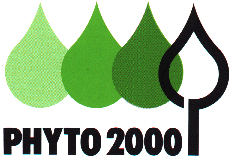
 | ONCOBIOLOGY | |||||||||||||||||||||||||||||||||||||||||||||||||||||||||||||||||||||||||||||||||||||||||
Looking back briefly at history shows us that Phytotherapy is part of the cultural and medical heritage of any civilization. Indeed, man has always sought plants not only for domestic and food purposes but also to an obvious therapeutic end.
Far back in 5000 B.C. the sumerian civilization used plants and metals to treat illnesses. The wedge-shaped tablets of Gilgamesh recount how the Chaldeans were the first to use an aromatic suppository.
As far back as we go in the history of the Indians of Ancient America, we find that they already knew how to treat malaria and amoebic dysentery with Quinquina and Ipecacuanha, which gave rise to medicines which are still widely used.
Even in China's most distant past, use was made of aromatic plants like Cinnamon, Pepper or Ginger to wage war against epidemics. Current scientific discoveries on the anti-bacterial power of the essences of plants confirm the congency of this empirical knowledge. It is, inter alia, on account of this power that the Egyptian aummies have been kept in such an outstanding state of preservation to the present; it has even been possible to observe fragments of the intestine intact with the miscroscope.
The Egyptians were well aware of the therapeutic properties of Garlic and Onion; this is doubtessly why every morning they gave a clove of garlic to the workers entrusted with building the pyramids. They seem to have been the first users of clysters, the legendary origin of which is linked to the ibis, the Nile bird which administered itself enemas with the beak..
The Romans and Greeks who were the distant heirs of the oriental civilizations knew only too well the properties of the medicinal plants. In the Iliad and Odyssey, Homer sang of the famous Nepenthe which caused all pain to be forgotten and which was, in all likelihood, based on Opium. Hippocrates was called the "redeemer of Athens" when he succeeded in wiping out the plague by burning fragrant plants in the streets.
The sacred plant of the Hebrews called Hyssop was used in the preparation of mistral water and cumin made for quicker healing after a circumcision.
The Arabs played a great part in the history of Phytotherapy and from this distant past stand out important people such as Rhazes or Dioscorides and Galen whose pharmacopoeia included nearly 500 different products of plant origin. Pliny who recommended savory for snake-bites (recently the remarkable work of Professor Pellecuer in Montpellier has highlighted the anti-bacterial power of savory essence). Oribase in Byzantium advised colchicum in the case of gout and it remains still a basic treatment in our synthetic chemotherapy age.
In the Middle Ages knowledge of the properties of plants was in the hands of monks who, familiar with Greek and Latin, passed on the knowledge of by-gones times.
An astonishing theory, termed Signatures, draws an analogy between the shape and aspect of the plant and the illnesses they conjure up : thus bamboo reminding one of the spine ought to treat deformation of the skeleton, white latex foster lactation and the bark of the willow which protects it from the cold (the willow's roots grow in water) should treat illnesses caught when one has cold feet. Strangely enough the work of chemists in connection with willow bark gave rise to aspirin.
In this way no magic, now science forgotten and revived, drifting with the life and death of civilizations, this ancient knowledge was passed down the centuries. Since the times of yore, the road covered was great : in 1735 Charles de Linné published his "Nature System" : the description and the classification of the plants had been expanded but their structures and the leading principles accounting for their action were still unexplained. This was the work of the XIXth century with progress being made in botany, chemistry and pharmacology which made it possible to extract leading active elements : alkaloids.
From Opium came Morphine in 1806; from "nux vomica" came Strychnine in 1818; from Quinquina came Quinine in 1820; from Belladonna came Atropine in 1833; from Penicillium came Penicillin in 1929...
The fundamental research which is going on in Laboratories has highlighted such a complex structure of plants that it accounts for their Versatile action. We discovery why the ancients advised women experiencing menstruation problems to take Sage or Cypress which contain substances the structure of which is akin to that of folliculin, one of the female hormones. For treating gout the Ancients advocated decoction of Meadow Saffron from which we know extract Colchicine.
To the present day, when Henri Leclerc was born in Paris in 1870 at a time of rife scientific expansion, the entire medecal field was being channeled towards new research and in particular the use of the leading active components of the plants. Being very eclectic and guided by an unequalled clinical sense, he delved into all therapeutic realms to treat his patients. Up to his death in 1955 he went on researching into and studying the pharmaco-dynamic and healing action of many a plant.
He thus prefered substances taken from the plant kingdom in the form of total extracts which seemed to him to suit the needs of the body better than isolated main active components. The clinician performed his work relying on the research of many chemists and pharmacists like Gattefossé, Jean Leon Binet, Morel, Courmont and Rochaix....
The alkaloids and glucosides (the leading active elements of plants) were then used as models by the chemists to synthetize the same types of substances in a laboratory. The researchers directed their efforts towards the synthetic manufacture of very specialized products. Thus is less than thirty years chemotherapy has emerged as the specific medecine of the pinpoint symptom, neglecting the patient's background completely. Furthermore, the harshness of its action, the agression it represents for the whole body, as underlined by ever more frequent accidents, make chemotherapy increasingly more dangerous.
to be continued..